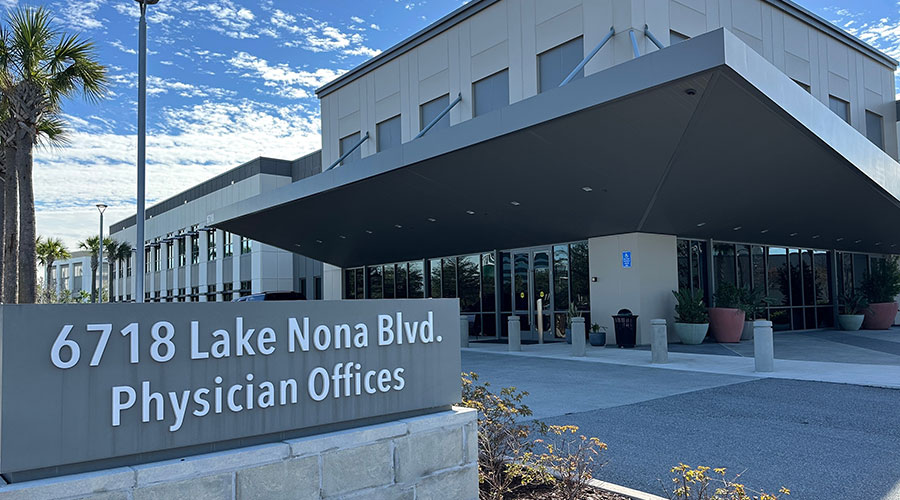The barrage of new information is constant. A steady stream of new guidelines, protocols, processes, procedures, equipment and technology present challenges for conscientious facility leaders who need to stay current. Furthermore, it seems like the frenetic pace of today’s dynamic environment represents the “new normal”. There is no “undo” or “reset” button – to stay relevant, it’s necessary to lean in to the learning curve.
Lighting technology has changed dramatically in the last decade, with the emergence of LED lighting and digital networked controls. With LED lighting came the promise of energy efficiency, reduced maintenance burden, controllability and a whole host of benefits that we’re only just starting to realize. This LED lighting revolution wasn’t just a minor technology enhancement – the fact that the 2014 Nobel Prize in Physics was awarded to the three researchers who developed the high-brightness LED now common in indoor lighting is a testament to its far-reaching significance. And, adoption of solid-state lighting is increasing exponentially each year.
What do these technological breakthroughs in lighting mean for healthcare facilities? Facility leaders and healthcare designers who “leaned in” to the LED learning curve in the early days have seen the industry evolve in meaningful ways. Making their way through the “alphabet soup” of acronyms and unfamiliar terms (CRI, CCT, LM-79, anyone?), they learned that adherence to industry standards was the first line of defense against subpar products. As the industry continued to mature, consumers were rewarded by better technology and reduced equipment costs. As with all new technologies, the learning continues. Whether you consider yourself an LED newbie or a seasoned pro, here are some guidelines to accelerate your LED learning curve for maximum benefit:
1. Find (and learn from) an expert. This one sounds basic, but seeking out local electrical engineers or lighting design professionals to assist with lighting technology questions is a smart thing to do. Just as most of us don’t re-read the tax code each year before filing our taxes, working with experts who deal with lighting guidelines, energy and building codes and other standards every day can flatten an otherwise steep learning curve. Focus on the key questions before getting mired into the details, and ensure that your inquiries about expected system lifetime, warranty coverage, energy efficiency, color quality, and dimming performance are addressed to your satisfaction.
2. Develop a plan for how to optimize LED renovation efforts. For existing facilities, a lighting renovation may be spurred by a number of variables. The key is to develop a plan that aligns these diverse needs with an action plan that positions you for success. For example, a need to reduce operations and maintenance costs may lead you to start with the great outdoors – focusing on expensive, hard-to-maintain site and parking structure lighting, where LED lighting can often save 80-90% over older HID sources. Once you’ve tackled exterior lighting, you may then choose to relight common areas in the facility, like corridors, administrative areas, and other spaces that can be replaced with just a few fixture types. In contrast, renovations that occur in conjunction with clinical or aesthetic updates to the facility will likely require a more cross-functional team to make the final decision on lighting selections. In these cases, it’s important to make use of lighting mockups to ensure sufficient buy-in on lighting equipment, taking care that both form and function meet your needs during these highly visible projects.
3. Create champions in your facility. While it’s doubtful that lighting will ever become any facility leader’s #1 campus priority, the strategic and operational impact of lighting are simply too big to ignore. Lighting is a leading contributor to the significant electrical load of healthcare campuses, and improved lighting has been linked to enhanced patient experience and outcomes. There is heightened interest in LED lighting outside of the traditional lighting industry; as a result, there are more quality resources than ever that provide solid, unbiased information about how to select LED lighting systems. Consider tasking someone on your team with becoming proficient in lighting. Not sure where to start? The US Department of Energy’s (DOE) Solid State Lighting (SSL) website provides a wealth of knowledge on LED lighting. In addition to its straightforward primers on lighting definitions and terminology, the DOE also shares its evaluations of commercially-available LED lamps and luminaires, as well as results of recent LED lighting installations. There are a number of academic and research organizations that also provide useful information about selecting LEDs, in addition to industry organizations such as the Illuminating Engineering Society (IES). Manufacturers and manufacturers’ representatives of lighting systems can be incredibly useful for practical, hands-on knowledge building and to stay up to date with the latest products and trends.
One last thing: as you lean in to the LED learning curve, don’t be overwhelmed or intimidated. Practice makes perfect, and even small projects can translate into big learnings and increased confidence. Partner with an expert, ask tough questions and develop a lighting game plan that allows you to realize a strong return on your objectives. Designate in-house lighting champions to help ensure that you build your knowledge base. Pretty soon, the LED learning curve will feel more like an easy hike than a steep ascent to the summit, and you’ll have reaped ample rewards for your facility along the way.
Karyn Gayle is the vice president of Healthcare Vertical at Acuity Brands.

 States Move Forward to Better Protect Senior Citizens
States Move Forward to Better Protect Senior Citizens Archer and REDA to Transform Newport Beach Building into Outpatient Center
Archer and REDA to Transform Newport Beach Building into Outpatient Center Sunflower Medical Group Facing Lawsuit Following January Data Breach
Sunflower Medical Group Facing Lawsuit Following January Data Breach Nemours Children's Health Opens New Location in Lake Nona
Nemours Children's Health Opens New Location in Lake Nona Enhancing Safety at Hennepin Healthcare with a Screening System
Enhancing Safety at Hennepin Healthcare with a Screening System